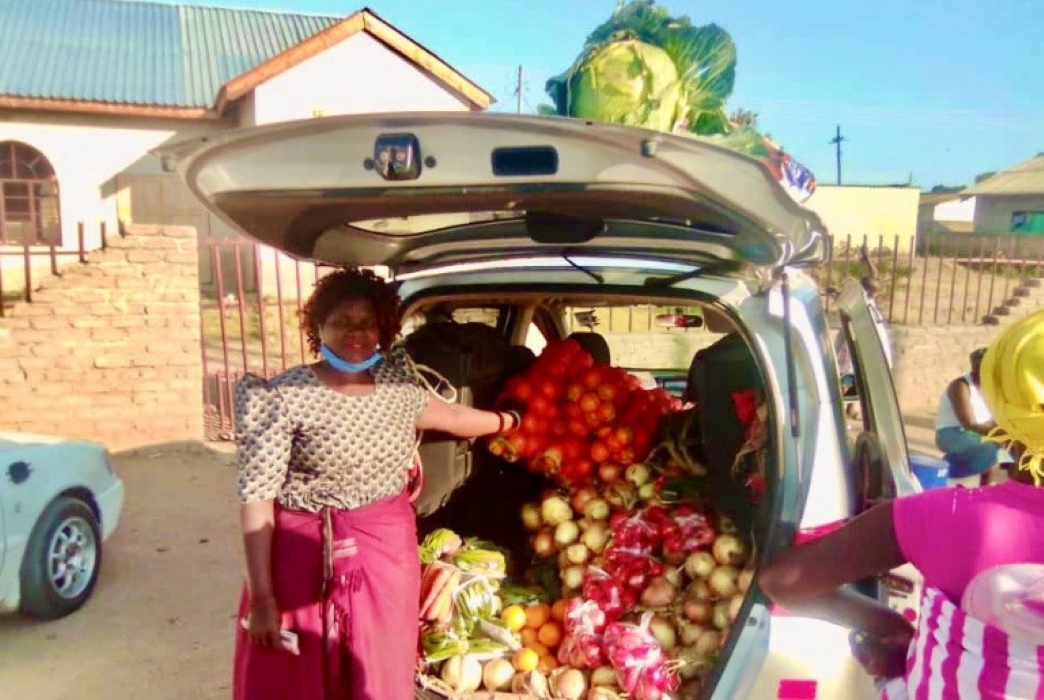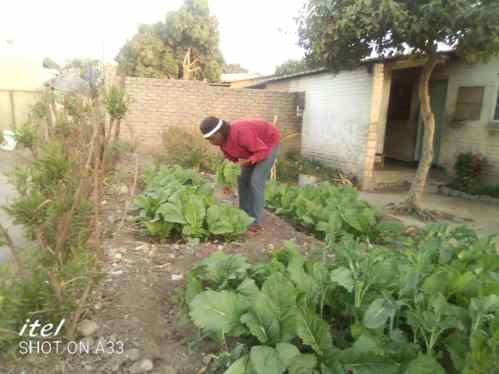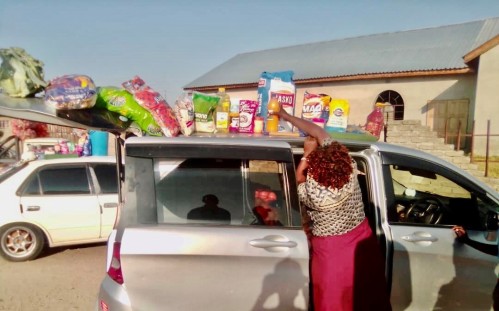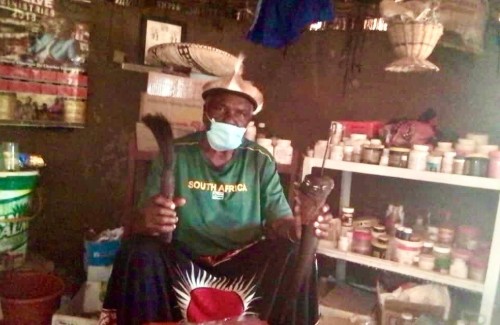Innovation in the pandemic: an update from Zimbabwe

This post was written by Ian Scoones and first appeared on Zimbabweland
I had the latest long discussion on responses to COVID-19 in our rural study areas across the country on 5 September. Check out the earlier updates from 27 July, 15 June and 27 April The pandemic continues to take a hold in Zimbabwe, and the case numbers are rising (total 6837 reported cases and 206 deaths on September 4), although the rapidity and extent of spread is not as feared – so far at least. As one of my colleagues put it, “we are still the survivors of COVID-19”. That said, the impact of the lockdown measures is far-reaching, but since it’s now gone on for so long, people are (by necessity) adapting, and finding new ways of responding. What was striking about this conversation was the array of innovations happening.
Rural and urban connections
The relationship between town and countryside has been transformed by the lockdown measures. In the past there were frequent visits between rural and urban homes, with people being able to respond immediately to a crisis or just go and visit for a weekend. Now movement requires an exemption letter issued by the police. “You very frequently have to lie”, one of our colleagues noted, “saying you have a sick relative or that there is a funeral; otherwise permission is not granted”. The comedian VaMayaya captured it well in a recent video. The inconvenience and hassle is evident, as villagers try and bluff their way past the police officer.
The restrictions have a big impact when flows of agricultural labour are curtailed. For example, in our sugar-growing site in Hippo Valley, it’s cane cutting season and usually migrant labourers come for short periods, but this year they either haven’t come or they are failing to get back home, causing tensions and family disputes. The lack of labour is also pushing up hiring costs for producers and the resettled farmers are now competing with the estate. Fortunately more resettlement A2 farmers are on their farms these days, especially since lockdown, as the management of labour is increasingly demanding.
The importance of ‘home’
There are large numbers of people who have moved from towns in Zimbabwe back to their rural homes. Some have been away for years and have to find new places to stay. But town has become difficult to live in – there are few jobs and many have lost them since lockdown, prices are high, rents are prohibitive and the lockdown restrictions are harsh. Many are finding sourcing food difficult. Drivers, company workers, civil servants, vendors, sex workers and others who have lost the means to make a livelihood have moved in droves to the rural areas. In all our sites, the population of villages has expanded massively. Added to these local migrations, there are those who have come from abroad, as we have commented on before. ‘Home’ in the rural areas is the social safety net that the state is unable to provide.
Those coming back have to make a living of course, and there has been an expansion of agricultural projects (poultry, horticulture etc.) as well as other farming activities, as land has been subdivided by relatives. In our Mvurwi site some of the returnees have signed up for tobacco contracts for the coming season, acquiring grower numbers through relatives. Teachers no longer working in schools have set up private tuition arrangements in their homes, while mechanics and others are providing services once offered in urban areas. Vending has exploded, as former civil servants and others try and raise money through new businesses and, in some areas such as Matobo and Mvurwi, small-scale artisanal mining provides sources of income for those who once populated offices and factories in town.
Food flows
The last few seasons have been poor in Zimbabwe and there are many areas this year in food deficit. Getting food to the right place when movement is restricted is a challenge. Responding to this has been a massive growth in private transport networks that facilitate the flow of food. There are food relief efforts by government and NGOs, but this is far more significant overall. Relatives with surplus in A1 resettlement farms will often take food to their kin in town in cars, where food is expensive and scarce. Those with significant volumes will sell on maize to traders who will take it to sell to traders in town markets. In local areas where there are patchy food deficits, people must scout around to check out which areas have food so links can be made, and food moved. It’s not like the past when people were always moving; in the COVID time people must actively seek out food and organise to get hold of it.
Some food is transported in larger quantities, with large 20 tonne trucks moving from Gokwe and northern Zimbabwe, for example, where food is plentiful to markets in the south of the country. The larger operations are well capitalised and organised, with ways of dealing with the movement restrictions through connections and payment to officials. Some operators control the whole supply chain, and move food to stores in urban areas where grinding mills are installed and direct sales organised. Other, more informal arrangements must deal with permits and road blocks, often having to pay off the police. Just as with the transport of groceries on trucks from South Africa discussed in an earlier blog, even though there are challenges, food does get through.
Despite the restrictions, the movement back-and-forth between town and the rural areas continues, and is essential for assuring food security and providing much needed goods. Much exchange is in the form of barter, as groceries (cooking oil, sugar, rice) and clothes are brought by people from town are exchanged with maize and other crops. Urban markets for food and other agricultural products are complemented by a huge growth of urban farming and gardening. As noted in a previous blog, nearly everyone is a gardener now.
Within rural areas such as our food insecure sites in the lowveld and Matabeleland South, some can exchange dried mopane worms, for example, with those who have grain nearby. It as a mostly informal system, but complemented increasingly by larger operations. It is far more effective than the cumbersome and politicised food relief systems of government, UN agencies and NGOs. As ever with food supply, even in a drought year like now, it’s about timely supply and access rather than overall availability, as is too often assumed in the ‘food crisis’ narratives about Zimbabwe.
Localising value chains: cars are the new mini-markets
Our team has been visiting local shops and supermarkets from Chikombedzi to Masvingo, Mvurwi and Kezi-Maphisa, and a common pattern is emerging. Retailers are increasingly sourcing locally. They complain that volumes are insufficient, quality is variable and the range of products is limited, but with restrictions on supply, including from South Africa, supermarket buyers are making use of local production. This is good news for horticulture, poultry and other suppliers in the rural areas who are receiving a COVID-19 dividend, despite the other travails.
This applies to other shops too. As stock cannot be sourced, local suppliers are turned to. The trend of South African ‘supermarketisation’ is being reversed due to an informal import substitution policy enforced by a virus. Of course not all products can be substituted and there are shortages of key elements for manufacturing processes. This is having knock-on effects for example in feed supplies, fertiliser manufacture, herbicide provision and spare parts of different sorts. This has definitely having a negative impact on farmers, as prices hike with increasing scarcity.
Shops in town are shifting their focus too. One hardware store in Masvingo, for example, was failing to stock goods and applied for a grocery trading license and is now shifted to supplying locally sourced groceries. But commerce is now not just through shops, as their opening hours are restricted by lockdown measures. The provision of groceries, grain, vegetables and a whole host of products is increasingly being done by local, mobile traders, frequently operating out of their own cars.
Mrs V. lives in Mucheke, a high-density suburb in Masvingo, she formerly has a stand at the KuTrain market in town. But this was closed for renovation due to lockdown and she instead took up trading from her car. “I don’t dream of going back to the kuTrain market”, she says, “I start at 3pm when shops are closing down and park at strategic points in the location and sell until the evening. It’s good business. I source products from local farmers, including those who have plots near Great Zimbabwe, and get groceries from truckers who come from South Africa”. Cars are the new ‘mini-markets’ and business is booming. All this is restructuring the economy towards more localised value chains that a greater diversity of people can benefit from, including farmers.
Working from home
Many formal places of work have closed and to make a living people must now work from home. It’s impossible to travel to work due to movement restrictions and those who are self-employed have shut up shop as rents and rates are high. Moving businesses to home during lockdown made total sense, and they are thriving. There are welding operations happening in living rooms, tailoring businesses in garages, bakeries in people’s kitchens, beer brewing in yards… along with hair salons, photocopy/printing businesses, brick-making and so on. The list is endless.
Working from home takes on a different meaning in Zimbabwe, whether in the townships or in the rural areas. Of course much of this activity is illegal, flouting health and safety rules and avoiding taxes, but as one person running a home business argued, “What can I do? I have to survive! We are learning new skills for survival!”
Finance in the COVID economy
With Zimbabwe’s economy in a mess, and currency swings a daily occurrence, navigating finance in business and agriculture is a challenge. The new Reserve Bank auction system, and the control measures that have limited exchanges, agents and cahs withdrawals has, it seems, brought some more stability of late. The official and parallel exchange rate is now closer, and the queues at shops, fuel stations and so on have reduced, as the opportunity for hoarding and speculation, and gaming the system has reduced. More commodities are now available in large part due to the new supply systems that have evolved in recent months. Instead, as one of my colleagues observed, “the queues you see today are waiting for sanitiser and temperature checks at shops”.
With inflation high and the local currency weak, the economy has by default re-dollarised, but the underlying fragility remains. All this is good for producers and consumers, but not everyone. Our team interviewed a money changer in Mvurwi, once a sight on every street corner: “I used to make US$500 per month, but now I am lucky to get US$80. I used to enjoy good living, drinking every day. Now it’s tough”. As our colleague put it, “rather than see the well- known money changers in the bars braaiing meat, they now go home with a bundle of vegetables like everyone else!”
Alternative health systems
With the near-collapse of the Zimbabwean public health system, and a series of rolling strikes by nurses and doctors who are poorly paid and badly treated, people are more and more reliant on alternative sources of health provision.
Sometimes this is through the family, with particular family members having knowledge about herbal remedies. There is a huge demand for particular herbs, tree roots as well as onions, ginger and lemons, which are seen as important in remedies. Not all of this is directed to COVID-19, but people are very aware of the need to boost immunity, stay healthy and have remedies at hand in case the virus strikes. Those supplying herbs or other agricultural products used as treatments have been experiencing a roaring trade in recent months.
The same is the case for prophets and other religious figures offering spiritual healing of different sorts, through banishing evil spirits and other causes of ailment. Large gatherings led by prophets from a variety of churches have attracted the attention of the authorities and some have been dispersed by the police. These days most are more organised, with effective distancing and requirements to wear masks. COVID-19 has definitely boosted the popularity of particular prophets across our study sites, who now have big followings.
Professional herbalists have also become massively popular. These range from the informal n’anga living in the village to Chinese/Indian herbalists to those African, traditional herbalists who have surgeries and clinics that spread between Zimbabwe, South Africa, Mozambique and Malawi. One such surgery is in Masvingo. One of the herbalists explained: “We have 300-400 customers a day, and sell herbs as far afield as the UK. There is huge demand. The clinics and hospitals don’t look after their patients, but we can – whether you are young or old. We can visit people at home or they come here. For COVID you must build strength to fight it and our herbs really can help”.
****
As elsewhere in the world, Zimbabwe’s pandemic experience continues to evolve, reflecting the very particular context of the country. Innovation, adaptation and learning to cope with a fast-changing, challenging setting are all important. We continue to monitor the situation across our sites from all corners of the country, so look out for another update in October.
Many thanks to all the research team from across Zimbabwe for continuing interviews and collecting local information on the COVID-19 situation (and for the photos from different sites).
All photo credit: Ian Scoones






